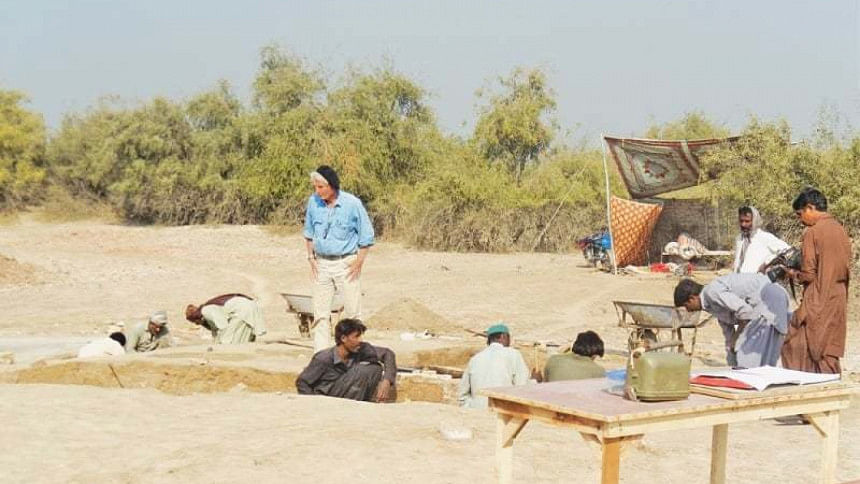French team uncovers mysteries of Indus civilisation’s ‘industrial hub’

This was the second round of excavation of the ancient site since 2015 by the French mission.
Head of a French archaeologists’ team Dr Aurore Didier has said his team has successfully completed the fresh season of excavation at Chanhon jo Daro in Benazirabad district in Pakistan's Sindh province and found it to be a busy industrial centre of the Indus Valley civilisation.
The Indus Valley civilisation was discovered by archaeologists in the Indian subcontinent in the 1920s.
This was the second round of excavation of the ancient site since 2015 by the French mission that had begun work on it along with students of different universities in January and completed it on March 5.
Speaking at a programme organised by the culture ministry at Shamsherul Hyderi Hall of the National Museum on Thursday, Dr Didier from the French National Centre for Scientific Research said the team “refilled the site to save it from any erosion or destruction in wake of rains etc” after successful digging.
But before filling the land, they found old structures and a large number of artefacts including beads, bead-blanks, and bead-drills and toys, which indicated that Chanhon jo Daro had been a manufacturing site during the Harappan era.
The audience was told that all those discoveries showed that the site was an ancient industrial hub that supplied terracotta products to the then major cities of the Indus Valley Civilisation, especially the ones situated at Moenjodaro and Harappa.
Calling the ‘golden period’ (2,500BC-2,300BC) as the first period of the Indus Valley civilisation, the French archaeologist said the site was either a contemporary of Moenjodaro or predated it. She said pottery factories had been found in one part of the site, while ‘apartments’, houses and a large ‘monumental’ building had been discovered in another part of it.
Dr Didier was impressed with its drainage system and said many antiquities found at the site bore resemblance to those spotted at Harappa and Moenjodaro.
The audience was informed that Chanhon jo Daro was first excavated by Nani Gopal Majumdar in March 1930, followed by a British expedition in 1935 and 1936. French archaeologists began excavation missions in Sindh and Balochistan in 1958.
While such sites required extensive excavation, several such sites had already been destroyed in Sindh due to agricultural activity, she observed.
She said they explored an area with 1,000-metre radius where they recovered mud bricks, apartments, housing rooms, pottery etc. They found ovens and figurines in its eastern part depicting domestic activities, and cutting stones and tools in the central part that seemed to be a manufacturing area. Besides, human and animal figurines had also been found. They found a massive building, compartments and bricks in the south-western part.
Culture Minister Sardar Shah said three mounds at Chanhon jo Daro had been surveyed and excavated. He announced that a museum and a guest house would be built at the ancient site.
Copyright: Dawn/ Asia News Network

 For all latest news, follow The Daily Star's Google News channel.
For all latest news, follow The Daily Star's Google News channel. 








Comments